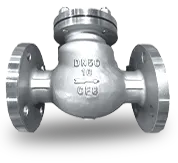Leading Manufacturers of Pipe and Fitting Solutions for Various Industries
Manufacturers of Pipes and Fittings A Comprehensive Overview
Pipes and fittings are crucial components in various industries, including construction, plumbing, manufacturing, and oil and gas. They play a vital role in transporting fluids and gases, ensuring the proper flow and functionality of systems. As industries continue to expand, the demand for high-quality pipes and fittings is increasingly important, leading to a growing number of manufacturers specializing in these products. This article will explore the key aspects of pipe and fitting manufacturers, including industry types, materials used, innovations, and global market trends.
Types of Manufacturers
Pipe and fitting manufacturers can be broadly classified into three categories large-scale manufacturers, specialized manufacturers, and local producers. Large-scale manufacturers typically operate on a global scale, producing a wide range of pipes and fittings for different applications, including residential, commercial, and industrial use. They often invest heavily in research and development, enabling them to produce high-quality, innovative products that meet industry standards.
Specialized manufacturers, on the other hand, focus on specific sectors, such as oil and gas, chemical processing, or water treatment. Their expertise allows them to create products that cater to the unique demands and challenges of these industries. Local producers may operate on a smaller scale, offering customized solutions to regional customers. These manufacturers often emphasize quality and customer service, building strong relationships with clients.
Materials Used in Pipes and Fittings
Pipes and fittings can be made from various materials, each with unique properties and applications. Some of the most common materials include
1. PVC (Polyvinyl Chloride) Widely used for plumbing and drainage applications, PVC is lightweight, durable, and resistant to corrosion. It's also relatively inexpensive, making it a popular choice for residential and commercial projects.
2. CPVC (Chlorinated Polyvinyl Chloride) Similar to PVC but capable of withstanding higher temperatures and pressures, CPVC is often used in hot water systems and industrial applications.
3. Copper Renowned for its durability and resistance to corrosion, copper pipes are commonly used in plumbing and heating systems. They have excellent thermal conductivity, making them ideal for water supply lines.
manufacturers of pipes and fittings

4. Stainless Steel Known for its strength and resistance to rust and corrosion, stainless steel pipes and fittings are essential in industries like food processing, pharmaceuticals, and petrochemicals.
5. Carbon Steel Often used in high-pressure applications, carbon steel is strong and versatile, making it suitable for oil and gas pipelines and construction projects.
Innovations in the Industry
The pipe and fittings manufacturing industry is continually evolving, driven by advancements in technology and materials. Innovations such as 3D printing, the use of smart materials, and enhanced manufacturing processes are transforming how pipes and fittings are produced. For instance, 3D printing allows for the rapid prototyping of custom fittings and components, reducing lead times and costs for manufacturers and customers alike.
Moreover, the development of smart pipes equipped with sensors is becoming increasingly popular. These pipes can monitor their own condition, detecting leaks or pressure drops in real-time, thus improving maintenance practices and preventing costly failures.
Global Market Trends
The global market for pipes and fittings continues to grow, propelled by urbanization, infrastructure development, and increased industrial activity. According to market research, the demand for pipes and fittings is expected to rise significantly in emerging economies as they invest in infrastructure projects and industrial growth.
Sustainability is also becoming a significant focus within the industry. Manufacturers are increasingly adopting eco-friendly practices, from using recycled materials to implementing energy-efficient production techniques. This shift towards sustainability meets regulatory requirements and caters to the growing consumer preference for environmentally responsible products.
Conclusion
Manufacturers of pipes and fittings play a vital role in supporting various industries by providing essential components for fluid and gas transportation. With diverse types of manufacturers, various materials in use, and continuous innovations transforming the industry, the demand for high-quality pipes and fittings remains strong. As global markets continue to evolve, manufacturers must stay ahead of trends, focusing on quality, sustainability, and technological advancements to meet the changing needs of their customers.
-
The Key to Fluid Control: Exploring the Advantages of Ball Valves in Industrial SystemsNewsJul.09,2025
-
The Versatile World of 1, 2, and 3 Piece Ball ValvesNewsJul.09,2025
-
Stainless Steel Ball Valves: The Ideal Choice for Efficient Flow ControlNewsJul.09,2025
-
Optimizing Fluid Control with Ball Float ValvesNewsJul.09,2025
-
Manual Gate Valves: Essential for Control and EfficiencyNewsJul.09,2025
-
Everything You Need to Know About Butterfly ValvesNewsJul.09,2025
-
The Versatility of Wafer Type Butterfly ValvesNewsJul.08,2025




